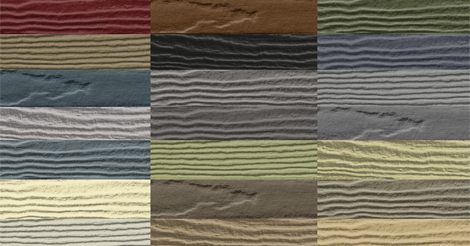When it’s time to re-side your house, one of the most exciting—and overwhelming—choices you’ll need to make is what house color palette to choose. This is a big decision—one that will impact the entire look of your home. You’ll be confronted with your choices over and over again for years to come, each time you pull into your driveway, so…the pressure’s on!

All kidding aside, choosing a siding color really doesn’t have to be a nerve-wracking experience. Once you know how to choose siding, you’ll be able to enjoy the process and will ultimately be more comfortable with your final decision. Below, we’ve compiled our best tips for choosing a house color that’s right for you.
- Look around: As you drive through neighborhoods, take note of color schemes that you love. Pay particular attention to the homes in your own neighborhood, and identify any common color combos that exist. If your neighbors all have natural, low-key color schemes, and you paint your house bright orange, it may become a bit of an eyesore. However, if the houses on your street are spaced far apart or have an eclectic mix of styles and colors, there’s less need to take the siding colors of your neighbors’ homes into account. In any case, gather ideas during this stage and take note of what you like—and what you don’t.
- Consider your home’s features: If your roof is less than 10 years old, you’ll likely be living with its hue for a while longer. So, if your roof is a darker color, you may want to consider a lighter shade on your home to brighten the façade. Conversely, if your roof is a lighter color, you can get away with a darker shade. Also, when choosing a dark or light color, consider that darker shades can be too overwhelming on a large home, while they can help a smaller home stand out. have a lot of ornate woodwork? Light colors can help these details stand out, while darker colors tend to diminish their presence.
- Consider your setting and architecture: Warmer tones are generally more at home in the south, while cooler tones are found on homes in the north. For example, a home set in the Southwest would find a sandstone color to be a natural complement to its desert surroundings, while a pale blue may be out of place. Conversely, muted colors found in nature may work best for a home set in the woods in New Jersey, rather than vibrant pinks and oranges. Similarly, certain architectural styles demand consideration. For example, Craftsman-style homes generally feature rich, natural tones, while Victorians may call for bolder, contrasting color schemes.
- Understand how colors work: James Hardie, which manufactures HardiePlank® siding, offers readers a quick lesson in Color Theory, explaining that colors next to one another on the 12-section color wheel can be combined to create a low-contrast, serene color palette, while complementary colors (opposite one another on the color wheel) will provide deep contrast for a vibrant, lively look. Another popular house color scheme is the triad, in which the primary color is selected, along with the two colors on either side of the first color’s exact complement. Keep in mind that colors should not be used in equal measure. Instead, one house color should take the lead and the others should provide contrast on trim work, shutters, and other details.
Now that you know how to choose siding colors, try building your own color palettes with the help of James Hardies design tools available here. Of course, if you want personalized guidance on the best color choices for your home, just give us a call. Professional color guidance is just one of many supports George J. Keller provides when we re-side your home. Contact us today at 973-927-0963 for a free estimate!
